
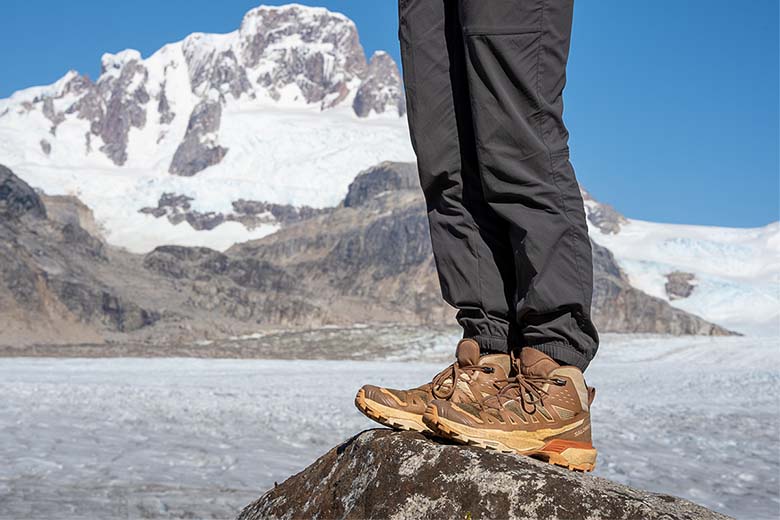
Price: $170
Weight: 1 lb. 9.8 oz. (women’s)
Waterproof: Yes (Gore-Tex)
What we like: Retains a lot of what we like about the flagship X Ultra—including solid comfort, traction, and durability—in a more sustainably built package.
What we don’t: Loose collar offers minimal ankle support, limits protection, and makes it easy for debris to creep in.
See the Women's X Ultra 360 Edge Mid See the Men's X Ultra 360 Edge Mid
Salomon’s hiking boot collection runs the gamut from fast-and-light designs for covering ground quickly to substantial leather models for intensive, multi-day backpacking trips. The X Ultra 360 Edge—a spinoff of the brand’s legendary X Ultra—falls in the former category, with a competitive weight and nimble, sprightly feel. However, after testing the mid-height women’s version on a technical backpacking trip in Patagonia, we came away disappointed by the lack of support and susceptibility to debris sneaking inside. The boots are perfectly serviceable for moving quickly over less aggressive terrain, but we see little reason to opt for the Edge over the standard X Ultra. Below we outline our experiences with the X Ultra 360 Edge Mid. To see how it stacks up to the competition, check out our articles on the best hiking boots and best women’s hiking boots.
Comfort has been a strong suit of most Salomon boots I’ve tested, and the same held true for the X Ultra 360 Mid GTX. While not exceedingly plush, the interior has a well-padded and relatively foot-hugging feel. My experiences on the trail confirmed these initial impressions: Despite taking the shoes out of the box and directly on a five-day backpacking trip, I experienced no hot spots or blisters and arrived at camp each night with little to no foot soreness (often an indication of a lack of padding underfoot). Details like the thick, soft collar and flat laces also helped maximize comfort and minimize pressure points. Finally, there’s a good amount of flex at the forefoot, which allowed for a smooth and natural stride (the back has more structure for added stability).

At 1 pound 9.8 ounces per pair for the women’s version, the X Ultra 360 Mid GTX is a competitively light addition to the market. Within Salomon’s own lineup, similarly intentioned designs including the X Ultra 4 Mid GTX (1 lb. 10.1 oz.) and Cross Hike 2 Mid GTX (1 lb. 9.5 oz.) both weigh around the same and offer a similarly agile feel. In fact, all three boots are light enough that they undercut many low-top hiking shoes, which is quite impressive. And in testing, the X Ultra 360 went largely unnoticed, which is a good thing. The boots felt perfectly nimble and responsive underfoot, making it easy to move quickly on the trail.
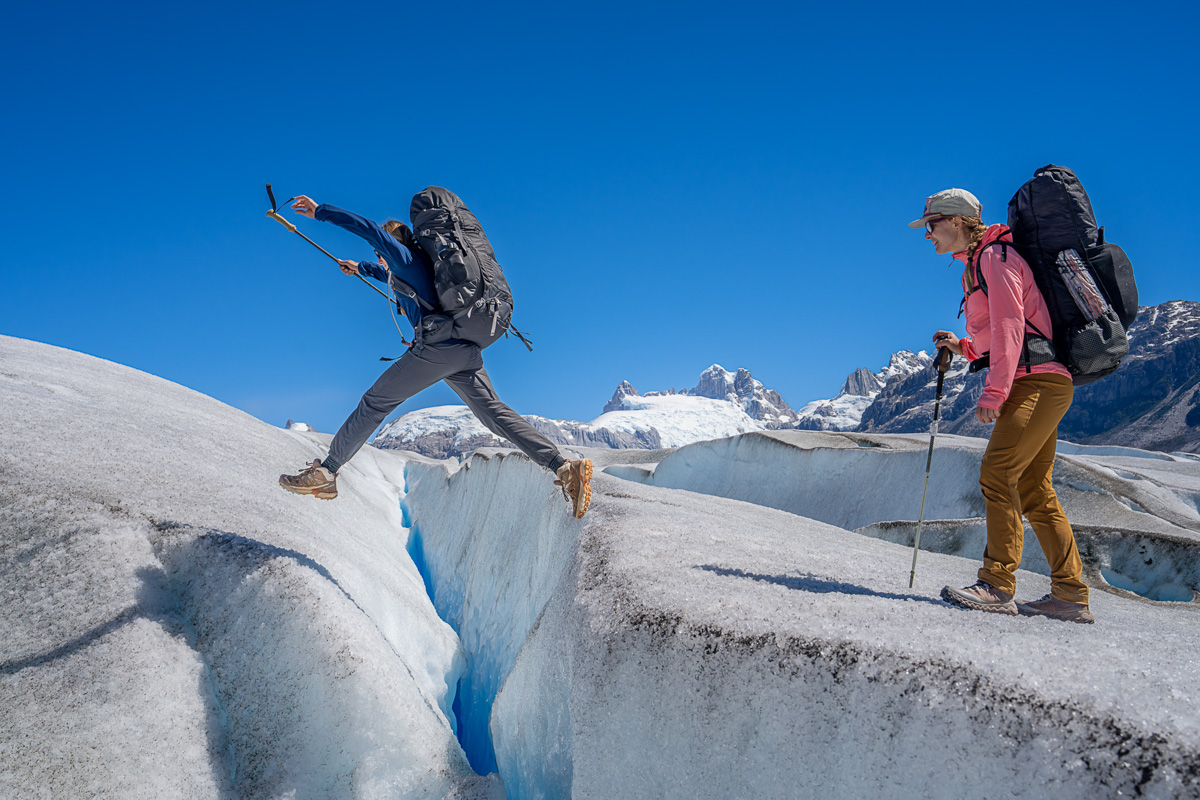
Like the standard X Ultra, the X Ultra 360 Edge is extremely grippy and reliable on mixed terrain. We covered the full gamut on our five-day trek in Patagonia, from loose gravel to mud, wet moss, boulder fields, and even a dry glacier. Despite pushing the boots well beyond their limits, the Contagrip rubber showed no signs of weakness. The deep, chevron-shaped lugs bite well into hard and soft surfaces alike, and the tread extends all the way from the back of the heel to the front of the toe for precision on steep slopes. In the end, I came away with no traction-related complaints and found it very easy to trust the boots even on challenging terrain.

Light and nimble designs often sacrifice some stability and support in the name of shaving weight, and the Salomon X Ultra 360 Edge is no exception. The most glaring issue for me was the lack of security at the ankle, which led to a fairly sloppy and loose feel at the collar. The single eyelet doesn’t help—it was difficult to achieve a snug and locked-in fit at the top, leading to some unwanted room and movement. I also found the boots’ laces prone to coming untied throughout the day, although this was likely due to the extensive amount of bushwhacking we did (and double-knotting them was an easy solution). In the end, these issues didn’t matter much on easier ground but became very apparent on challenging terrain that required precise footwork. If you anticipate hiking over more rugged surfaces or prioritize a locked-in feel, I’d recommend going with the standard X Ultra 4 Mid (which has two sets of locking eyelets) or an even burlier boot like Salomon’s Quest 4.

Gore-Tex is the gold standard among waterproof technologies, and the Salomon X Ultra 360 has performed predictably well in the wet. Our backpacking trip in Patagonia involved countless water crossings, most of which the boots handled with ease. The only notable issue is the low connection point between the tongue and collar, which made it difficult to prevent moisture from entering over the top in deeper conditions. It also led to debris like sharp goatheads and gravel constantly making its way inside my boots (although my exposed socks didn’t help). Given my experiences, I wish Salomon had attached the two pieces higher up—protection ends at the base of the ankle—to create a better seal, although pairing the boots with gaiters is a viable solution.
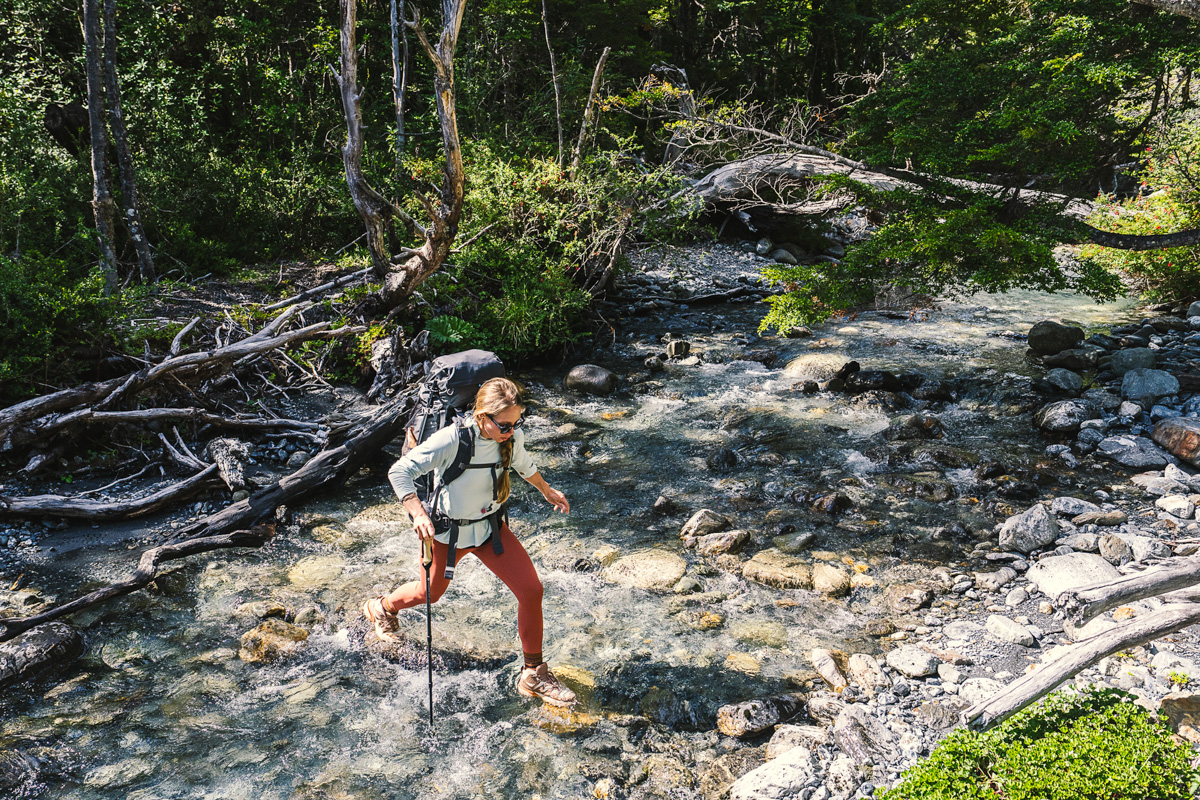
The X Ultra 360 Edge provided adequate breathability in Patagonia’s warm (low 70s to 80s Fahrenheit) temperatures. While the Gore-Tex liner does impact overall ventilation—the same barrier that keeps moisture out also seals in some heat—my feet were never sweaty at the end of our long days. My socks were a little damp and required drying overnight during a particularly balmy stretch, but it was totally manageable and in line with what I’ve come to expect from Gore-Tex hiking boots. A final compromise to the waterproof construction is that the X Ultra 360 took some time to dry after an accidental submersion, but that’s an unavoidable downside if you need the protection.

The X Ultra 360 Edge is far from the most protective mid-height hiking boot on the market, but it provides a decent amount of coverage and assurance against harsh impacts on the trail. As I touched on above, I found it difficult to get a snug fit at the ankle, which was a result of the low connection point between the tongue and collar as well as the single locking eyelet. This also caused a bit of a gap at the top for trail debris to creep in—I frequently had to stop to pick out goatheads and other sharp bits from my socks during our trek. That said, the rest of the design is pretty solid overall: The substantial toe cap effectively takes the sting out of direct hits from rocks or roots, and there’s enough padding to protect when sliding through tighter spaces (such as between rocks).
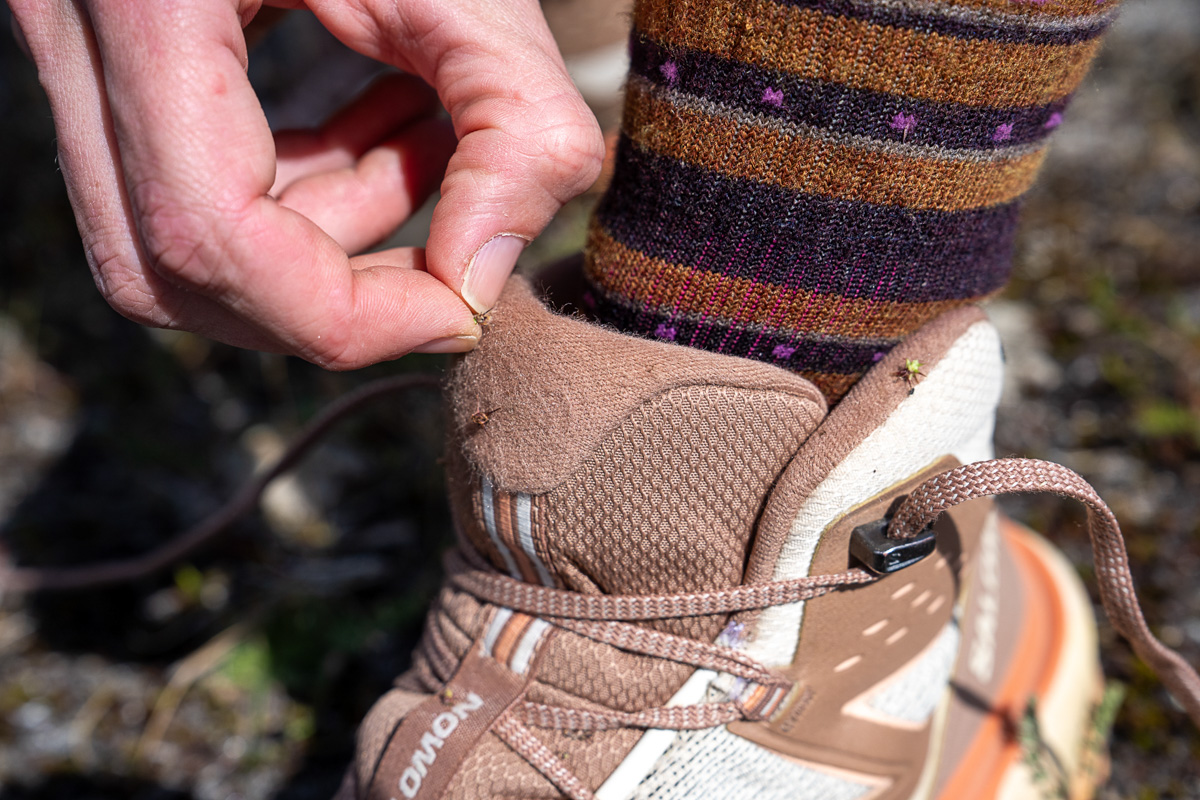
Salomon has been in the outdoor footwear business for nearly eight decades, so it comes as little surprise that the X Ultra 360 Mid GTX is a solid and well-built design. Everything from the Contagrip outsole to the synthetic upper have held up well throughout testing with no signs of wear or deterioration to date. The porous, mesh-like material covering most of the forefoot likely won’t fare as well over time as burlier leather designs (like the aforementioned Quest 4), but Salomon did include thick overlaps along the sides and rear for added protection. I’m also not a huge fan of the drab Shortbread/Raw Umber/Prairie Sunset colorway (which is currently the only option available for women), although that’s purely a matter of personal preference. I’ll need more trail time to make a definitive statement about long-term durability, but I expect most hikers will be able to get a reasonably long life out of the boots provided they stick to easier terrain.
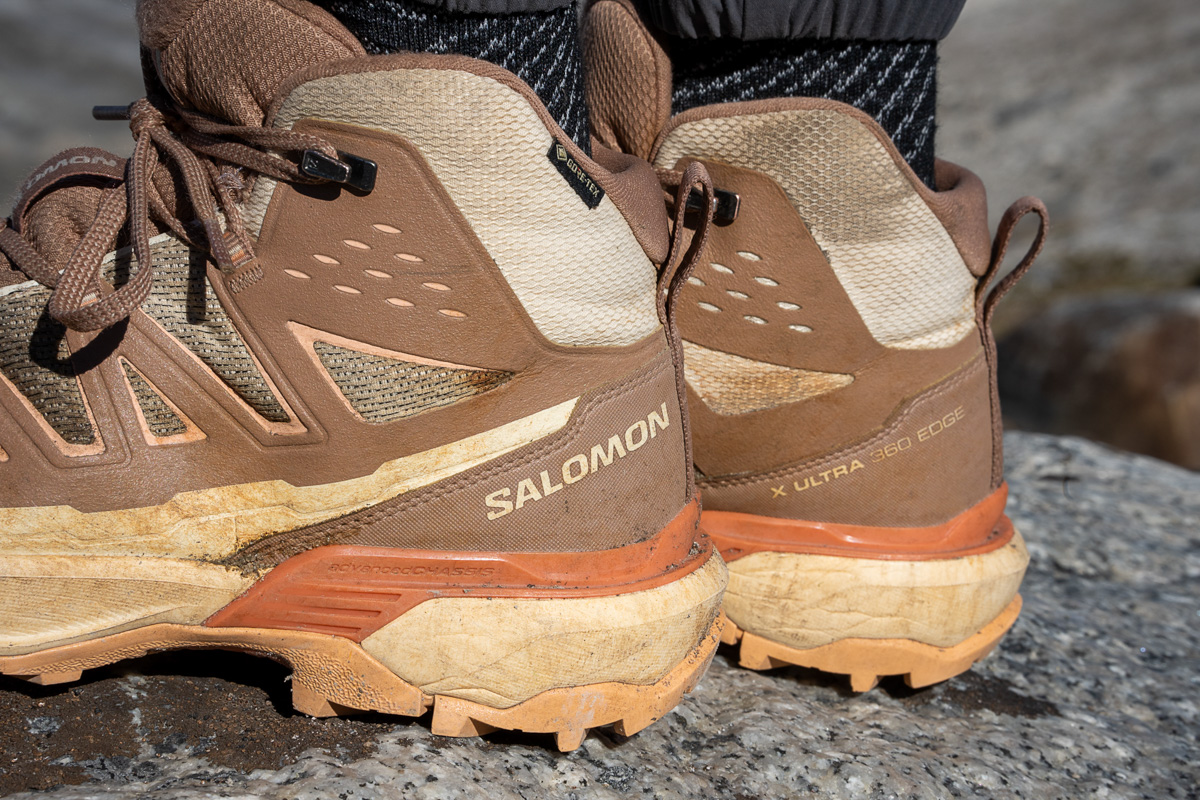
I opted for my usual women’s size 8.5 in the X Ultra 360 Mid, which proved to be a good all-around match. Apart from the aforementioned looseness at the ankle, the rest of the boot hugs my foot nicely with no areas that are overly tight or roomy. It’s just about perfect lengthwise, too: I’ve experienced minimal heel slippage on climbs thanks to the snug heel and am able to cinch down the lower laces effectively around my forefoot to prevent unwanted movement. There is some added space in the toe box that was noticeable when I first tried on the boots, but I’ve found it’s just enough to account for natural foot swelling after long days on the trail.

Like many leading outdoor brands, Salomon has started employing more sustainable production practices of late. In this case, the X Ultra 360 Edge boasts an upper made with 49% recycled materials, along with a midsole that uses 8% recycled electrical cables. Salomon also advertises that the boots come in “ecological packaging,” although there’s no info on the specifics (and the box our boots came in appeared similar to those of other Salomon boots we’ve tested). All told, there’s certainly room for improvement in future updates, but we nevertheless commend Salomon for their ongoing sustainability efforts.

We brought the women’s X Ultra 360 Edge Mid GTX to Patagonia for testing, and the men’s version is largely similar. Comparing the two, the men’s X Ultra 360 Edge Mid GTX is a little heavier (1 lb. 13.5 oz. per pair) and comes in a different colorway but otherwise retains an identical feature set and overall construction. For those who don’t need or want the added ankle support, Salomon also offers the design in a couple low-top models: the waterproof X Ultra 360 Edge GTX and non-waterproof X Ultra 360 Edge. The shoes retail for $155 and $135 respectively and use Salomon’s single-pull Quicklace system in lieu of standard laces.
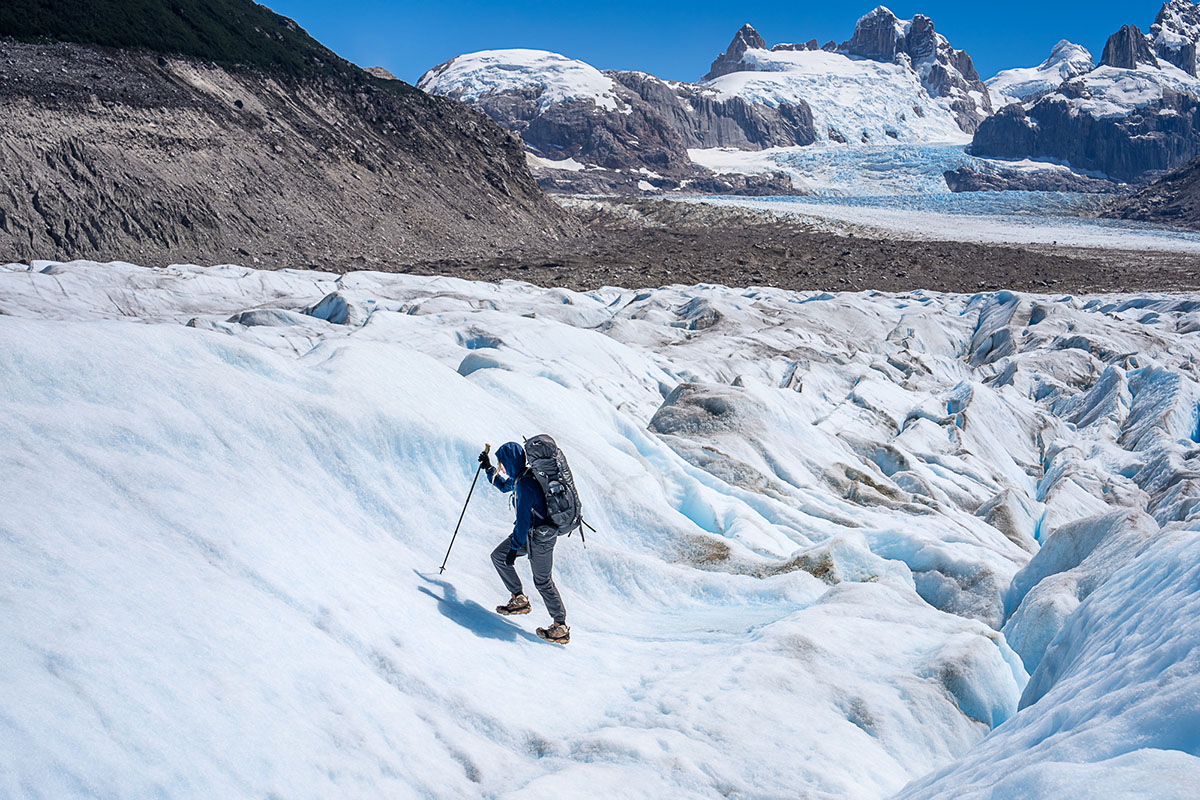
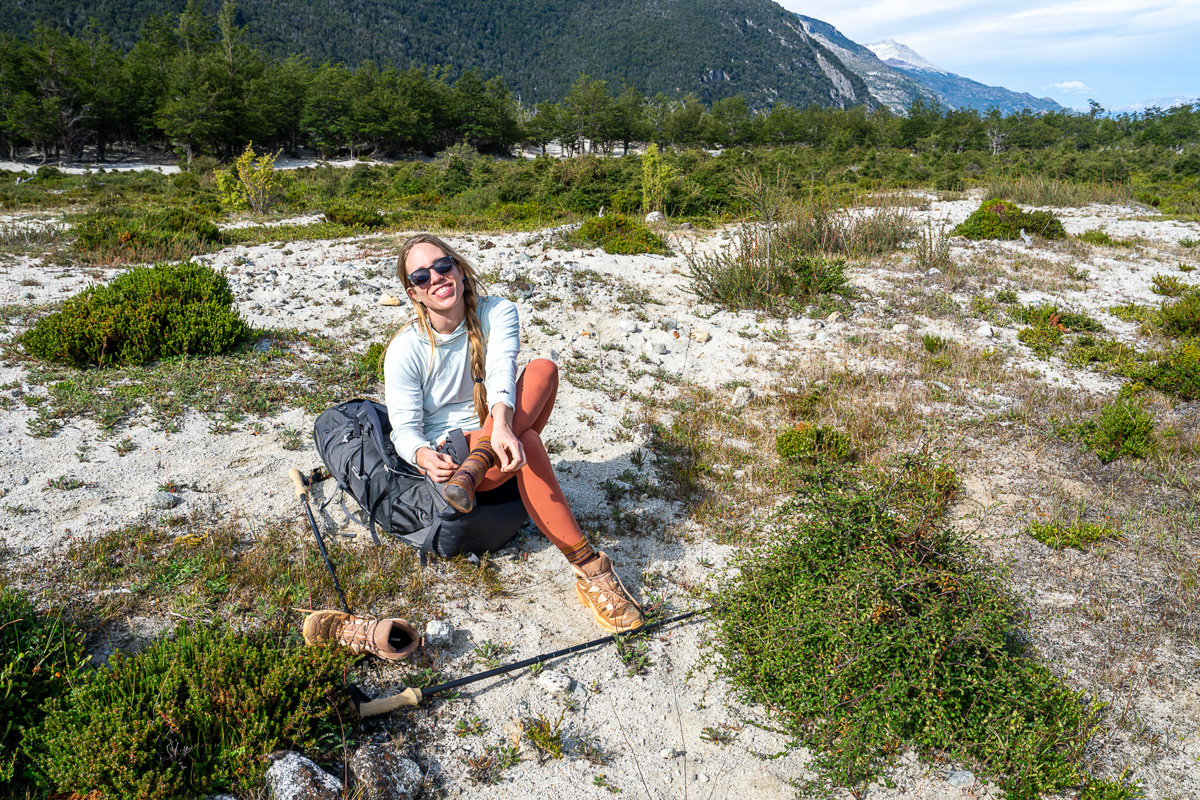
| Boot | Price | Category | Weight | Waterproof | Upper |
|---|---|---|---|---|---|
| Salomon X Ultra 360 Edge Mid GTX | $170 | Lightweight | 1 lb. 9.7 oz. | Yes (Gore-Tex) | Synthetic / textile |
| Salomon X Ultra 4 Mid GTX | $175 | Lightweight | 1 lb. 10.1 oz. | Yes (Gore-Tex) | Leather / textile |
| Salomon Cross Hike 2 Mid GTX | $190 | Lightweight | 1 lb. 9.5 oz. | Yes (Gore-Tex) | Synthetic |
| Hoka Anacapa 2 Mid GTX | $195 | Lightweight | 1 lb. 13.4 oz. | Yes (Gore-Tex) | Nubuck leather |
| Adidas Terrex Free Hiker 2 GTX | $220 | Lightweight | 1 lb. 10.7 oz. | Yes (Gore-Tex) | Synthetic |
The X Ultra 360 Edge Mid GTX is a very grippy and intentionally built hiking boot, but we still prefer the standard X Ultra 4 Mid GTX. For just $5 more, the X Ultra 4 tacks on an additional eyelet at the collar for better security and stability, along with swaths of PU-coated leather along the upper for added durability and abrasion resistance (at the sacrifice of a little breathability). Impressively, weight is still remarkably low at just 1 pound 10.1 ounces per pair for the women’s version, and overall traction and comfort line up closely with the X Ultra 360 Edge. Unless the recycled materials are a selling point for you, we consider the X Ultra 4 the better-balanced and more versatile boot.
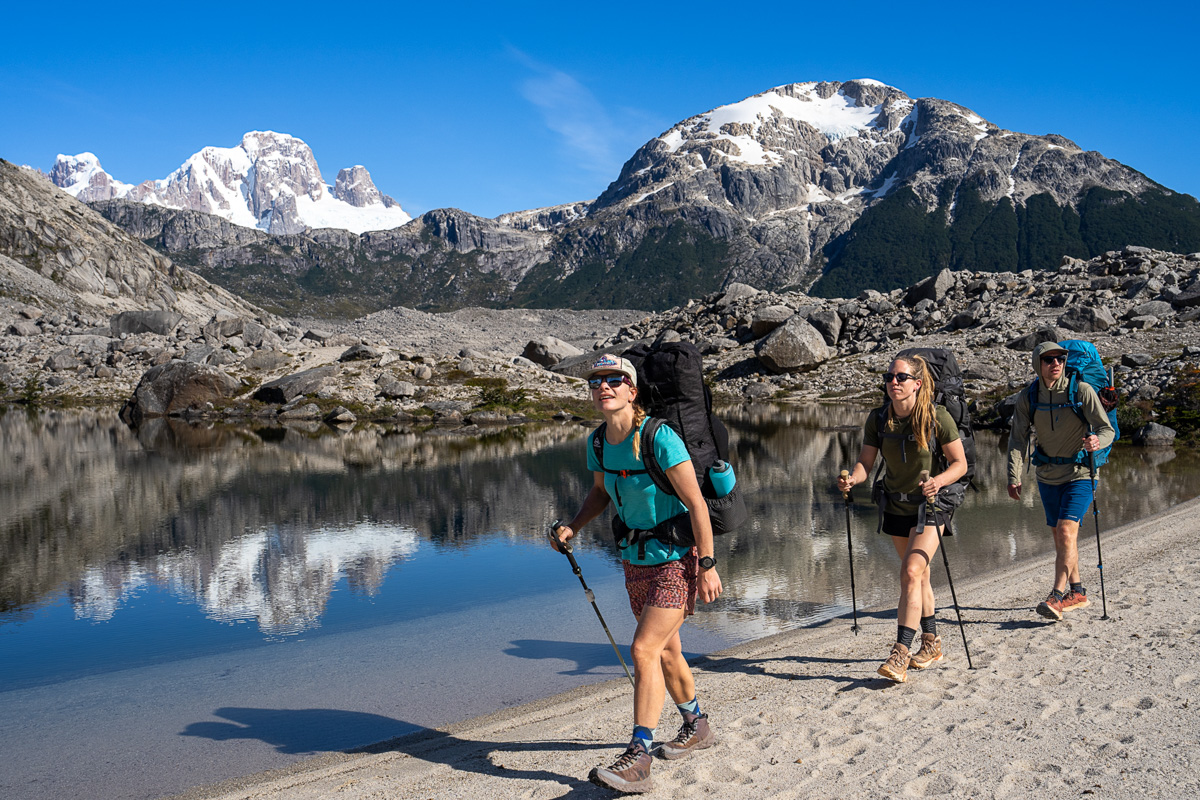
Next up is another lightweight Salomon design to consider: the Cross Hike 2 Mid GTX, which weighs about the same at 1 pound 9.5 ounces. One key difference is the use of Salomon’s single-pull Quicklace system, which makes on-trail adjustments quick and easy but isn’t as customizable as the X Ultra 360’s standard lacing design. The Cross Hike also has deeper lugs for better bite in soft ground like mud, along with thicker cushioning that gives it a very sprightly and energetic feel (even more so than the X Ultra 360). However, the clincher for us is durability: In testing the Cross Hike, the upper on one of our boots started to separate after just a couple outings. And like the X Ultra 360, the Cross Hike is lacking in support with a single eyelet at the top and gaping collar that’s prone to collecting trail debris. Given these experiences, along with the $20 price increase, we consider the X Ultra 360 Edge the better buy (for more, see our in-depth Cross Hike 2 review).
Moving outside of Salomon’s lineup, running brand Hoka offers an impressively capable mid-height boot: the Anacapa 2 Mid GTX. We tested the Anacapa on the same trip as the X Ultra 360 Edge and found it to be a solid fast-and-light performer. Like many of Hoka’s designs, it feels great on the trail with ample cushioning and a rockered sole, has an excellent all-around fit, and boasts good overall protection, durability, and support considering its design and intentions. It’s a little heavier than the Salomon at 1 pound 13.4 ounces per pair and $25 pricier at $195, but many hikers will find the added comfort and more secure lacing design—including three sets of locking eyelets—worth those trade-offs (ourselves included).
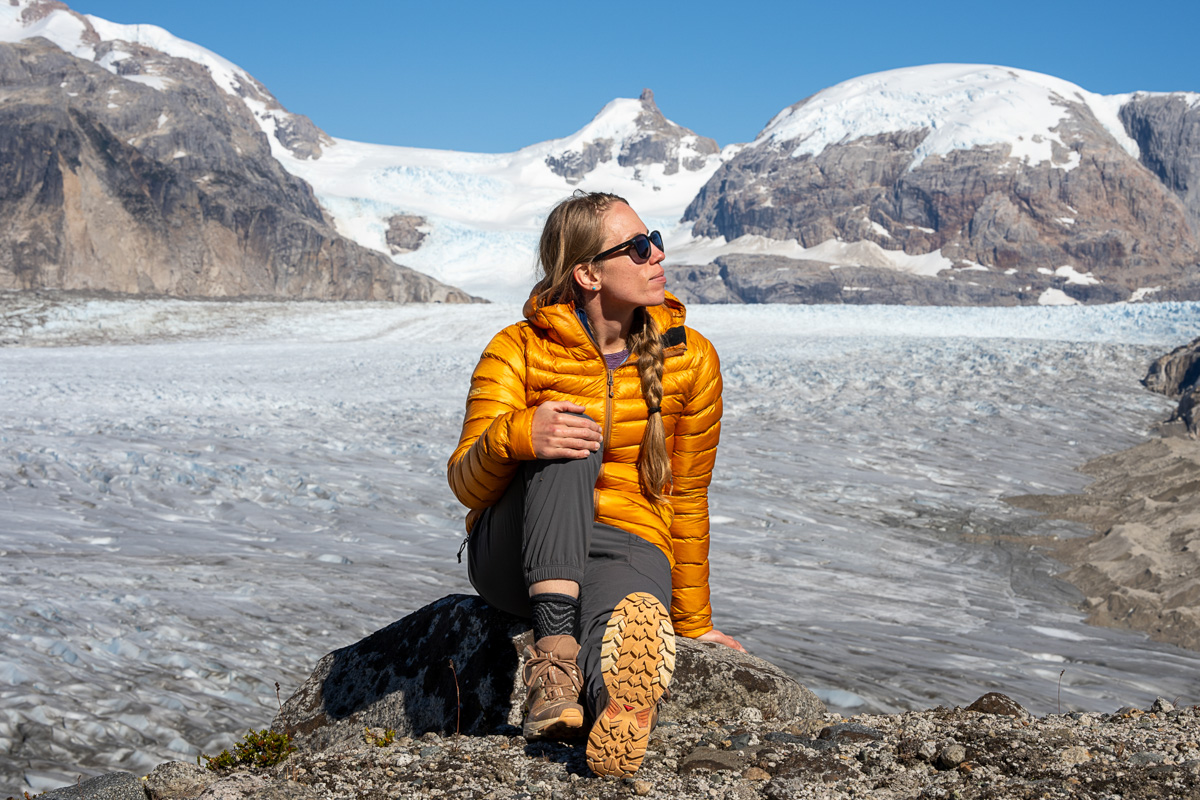
A final alternative—and one that pleasantly surprised us during testing—is the Adidas Terrex Free Hiker 2 GTX. Despite its fairly polarizing looks, the Free Hiker is a pretty capable all-around option: The sock-like fit is snug and comfortable, there’s ample cushioning on the tongue and collar, and traction is superb on everything from wet rock to loose dirt. It’s also competitively light at 1 pound 10.7 ounces per pair and reliably waterproof with a Gore-Tex liner. All that said, the exposed foam midsole started to show wear early into testing (including multiple slices and chunks of foam missing), and the Free Hiker doesn’t come cheap at $220. For a considerable $50 less, the X Ultra 360 Edge Mid offers similar overall performance in a slightly lighter and more hardwearing package (although both boots are relatively lacking in ankle support).